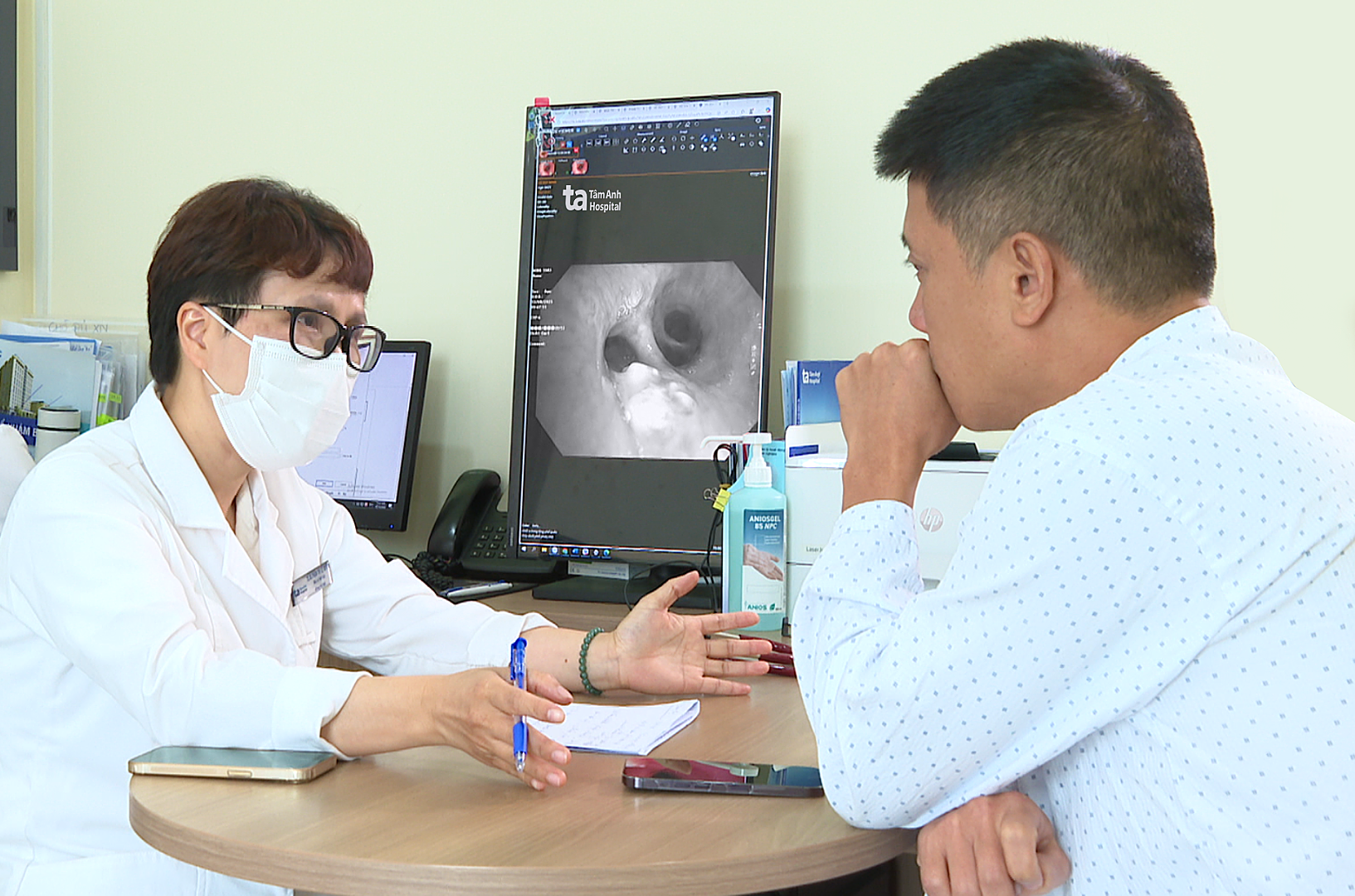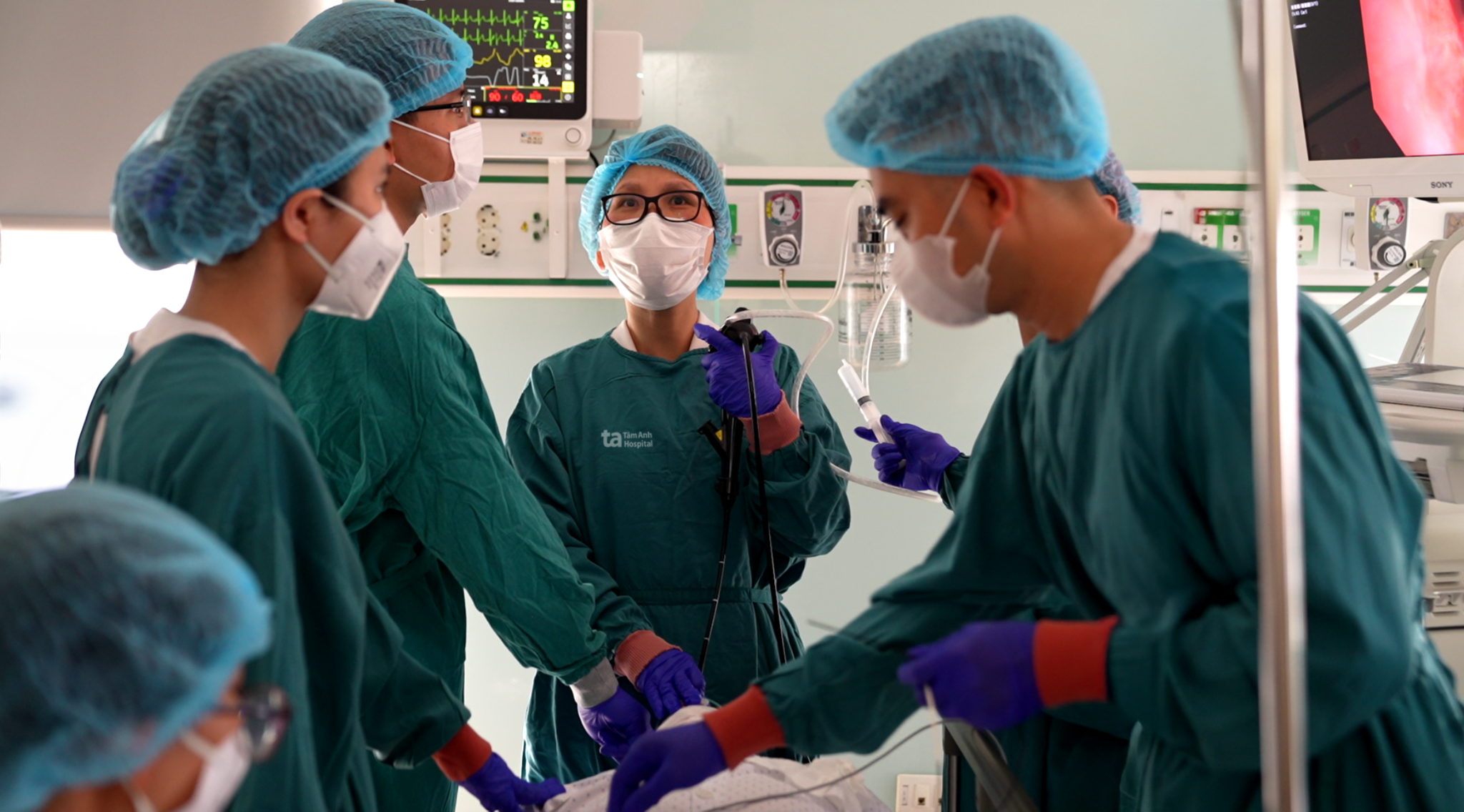The pedunculated tumor completely blocked the bronchus of the lower lobe of the right lung. Pus accumulated below the tumor, indicating a risk of bronchial pneumonia due to the blockage. Minh’s lung CT scan also showed dilation of the bronchial branches and partial collapse of the lung tissue below the tumor.
Dr. Pham Thi Le Quyen from the Respiratory Department at Tam Anh General Hospital in Hanoi recommended radiofrequency ablation (using high-frequency electric current) to remove the tumor and cauterize the area to prevent bleeding in the airway. This bronchoscopic approach combined with tumor resection minimized the need for multiple anesthesia sessions, shortened the hospital stay, and resulted in faster and less painful recovery.
 |
A doctor consults with Minh about his bronchoscopy results. Photo: Tam Anh General Hospital |
A biopsy confirmed the tumor as a benign bronchial mesenchymal tumor, which accounts for about 1.9% of all lung tumors. Although benign, such tumors can still narrow the airways, cause recurrent pneumonia, or lead to serious complications if not detected and treated early. Dr. Quyen explained that if the tumor inside the bronchus grows larger, it can obstruct the airway, cause pneumonia and lung collapse, eventually leading to respiratory failure.
 |
Flexible bronchoscopy combined with radiofrequency tumor ablation. Photo: Tam Anh General Hospital |
After treatment, Minh's health improved, and his coughing and shortness of breath subsided. Follow-up examinations showed a stable scar at the resection site with no signs of recurrence or complications. He has returned to his normal activities, quit smoking as advised, and maintains a daily exercise routine.
According to Dr. Quyen, benign bronchial tumors are often overlooked because they develop silently, with virtually no symptoms in the early stages. Many patients discover them during general checkups or through imaging for other reasons. As the tumor grows, patients may experience persistent coughing, shortness of breath, chest pain, or pneumonia.
Regular health checkups once or twice a year can help detect abnormalities in the lungs and airways early. High-risk groups, such as smokers, people working in dusty or smoky environments, or those exposed to chemicals, should undergo regular respiratory screenings. If experiencing unusual symptoms like persistent coughing, shortness of breath, or recurrent pneumonia, individuals should seek specialized medical attention for diagnosis.
Thu Giang
| Readers can submit questions about respiratory diseases here for doctors to answer. |












